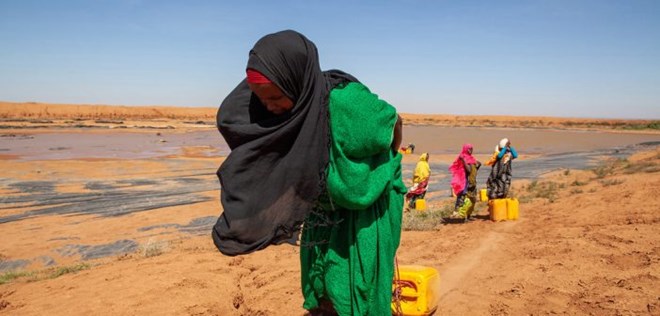
Wednesday October 7, 2020
By Jane Dangel

SEATTLE, Washington — After a severe drought in Somalia in 2016, 40% of the country’s population was left in a state of food insecurity. With 75% of Somalis relying on agriculture for daily food intake, even a small drought can have a detrimental effect on local quality of life.
Water Insecurity
Droughts have proven to be part of a larger cycle faced by the nation. Climate shifts such as El Niño have far-reaching effects on a fragile, largely informal and agrarian economy. Another leading cause of recurring water shortages has been conflict, which has internally displaced 20% of the population. Due to this, large scale water storage infrastructure is difficult to construct and maintain for a population perpetually on the move.
Despite all of these forces landing Somalia in a precarious cycle, humanitarian efforts to restore water security have seen positive results. In one instance, efforts by the United Nations Development Programme use sand, one of the nation’s most abundant resources, to combat drought in Somalia.
Sand Dams
By constructing dams that capture and store water during wet seasons, out of the sand that comprises the terrain in this region, the U.N. has devised a simple and cost-effective means to ensure a steady supply of freshwater. So far, the program has reached 160,000 people across the nation. Each dam is able to capture up to 40 million liters of water. In other words, each dam can supply water for up to 1,000 people and their livestock year-round.
Similarly, a Somali lead offshoot of the U.N.’s Development Programme, the North-Western Integrated Community Development Program (NWICDP), has been working specifically in regions where nomadic people, often the most affected by drought, live in the highest concentrations. Over the course of 10 years, 15 sand dams have been constructed, affecting a total of 43,000 households. Among these households, 240,000 people were considered to be the poorest in the selected area.
Lasting Impact of Sand Dams
With this newfound water abundance, small villages that would have otherwise succumbed to desertification have transformed into hubs of agriculture. In one town, Agasmo, farmers have made the switch from subsistence farming to cash crop farming, allowing them to sell and trade their crops for other vital goods and services. Since the NWICDP’s project, the number of active farmers in Agasmo has increased three times over, and crop production five times over.
As Samir Bejaoui, the program’s analyst, reports that sand dams are a powerful method for Somali people to manage water shortages and are having an extremely beneficial impact.
Not only do sand dams provide reliable water sources, but their construction also provides jobs to Somali people that bolsters local economies and improves quality of life. Through the U.N.’s program, 2.1 million people partook in the construction of sand dams and other environmental resilience efforts. In exchange for their work, 80,000 people received immediate access to food, while others received seeds, tractors or cash.
In short, sand dams provide a much needed reliable water source to a people that are chronically threatened by drought. Simultaneously, sand dams open up economies through increased agriculture and job opportunities. As international humanitarian efforts collaborate with locals to construct more dams, the future of drought management in Somalia looks brighter.